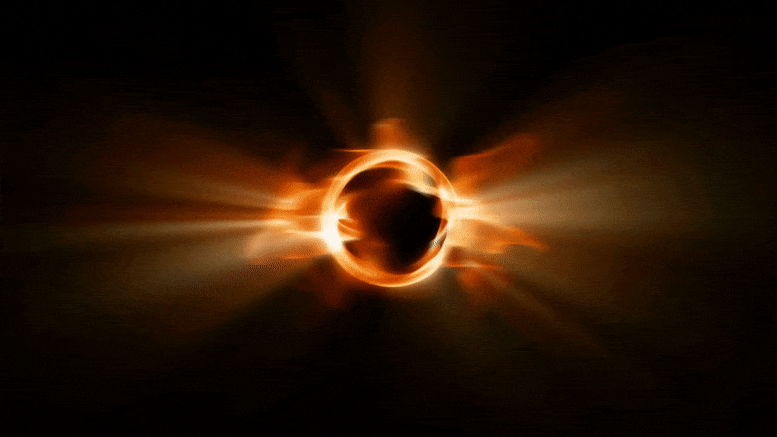
Microlensing strikes again. Astronomers have been using the technique to detect everything from rogue planets to the most distant star ever seen. Now, astronomers have officially found another elusive object that has long been theorized, and that Universe Today first reported on back in 2009 but has never directly detected – a rogue black hole.
That detection comes at the end of a 6-year observational campaign, with dozens of authors collaborating on a paper recently published in arXiv (meaning it has not yet been peer-reviewed). Those six years of painstakingly gathered data all started back in 2011, when a star about 20,000 light-years away brightened suddenly. Scientists were looking for just such an event and had found several before but needed more data to be sure of what they were actually seeing.
Microlensing leaves two tell-tale signs. The object in the background of a microlensing event would grow significantly bright, as was seen with this star in 2011. In addition, and if the positioning were lucky enough, telescopes would see the star shift ever so slightly as the massive lensing object passed in front of it.
Past observations have shown plenty of brightening events that microlenses might have caused, but astronomers have never before seen the positional shift that would confirm that theory. Kailash Sahu and his colleagues turned Hubble, which is still one of the most functional observation platforms in humanity’s arsenal, toward the star a few weeks after its original brightening. They then checked back in with it periodically over the course of the next six years. In that time frame, they also collected positional data, hoping to use a technique called astrometry to detect slight movements that would indicate the star was subject to a microlensing object between itself and Hubble.
What Hubble saw was a mix of light amplification and warping. Just the fact that it was heavy enough to produce a microlensing effect, however, was insufficient to show that the heavy object in front of the star was a black hole. Sahu and his colleagues examined the lens’s light level to rule out any more possible microlens sources. None were discovered, which would have been the case if a different object—like a brown dwarf—had been the source of the lens. Furthermore, the lensing effect must last long enough to indicate a very deep gravity well. The first event in 2011 lasted 300 days, which was long enough to identify a black hole with a mass that is around 7.1 times greater than the sun.
With that weight estimate, scientists were also able to estimate how fast the black hole was moving and came up with around 45 kilometers per second – much faster than the stars surrounding it in that area of the Milky Way. Such a speed differential also points to a potential source of the black hole itself – an explosion from a supermassive star probably both created the black hole and kicked it on its way. Sahu estimates the event happened around 100 million years ago, but it is hard to tell as there is no clear, traceable path to where the black hole came from.
Even without that clear, traceable path, scientists have now definitively found something they have long sought, and they won’t be alone in doing so. Several all-sky surveys are popping up soon that will help scientists consistently scan the skies for events like that in June 2011, and they will most likely find plenty more. That isn’t to say that any of these hard-to-see masses of gravity will prove a threat to Earth, but the more we leverage new techniques like microlensing, the more likely we are to find any that eventually might be.
Adapted from an article originally published on Universe Today.


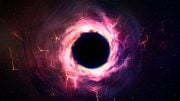

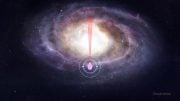

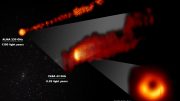

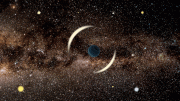
Very Interesting!
All Sky is Fine. However…..
Some Way-Out Thoughts for consideration, bordering on the edge of Science Fiction. However a lot of Science Fiction from less than a century away is turning into Science Fact today. So here goes imgaination on Steroids.
1. How about 360 degree View with Spherical Telescopes? A robotic All seeing Eye in the sky. placed at one of the five Lagrange Points for the entire spectrum of light in the visible and invisible spectrum (Infra Red and Ultra Violet). End to end Data Capture of the Universe. A vision for the futre.
2.Focus on OORT Cloud (Near by) and also distant objects in the Universe from where obects may
emerge , coupled with the reverse Logic explained by the “Physics Girl”! , to manage immediate risks and long-term risks from rogue asteroids, planets, AND Black Holes.
3. Can we build spaceships with variable chirality to be used to by the space travelers to avoid collissions with black holes and other objects floating in space. We know from magnetism that like pole repel and unlike poles attract. By repelling such floating matter, by making the floating objects of a Chirality which will ensure repulsion. A collission avoidance system for Space Travel!
Views expressed are Personal and not binding on anyone.
If this (7.1 times the mass of Sol) black hole is travelling about 45 kilometers per second (162,000 Kilometers per hour), then it would not even take a day for it to transit a star the size of ours if it was moving perpendicular to our line of sight.
For it to microlens a star behind it for 300 days, this black hole must be travelling very close to our line of sight. Directly toward or away from our current position in the cosmos.
There’s no danger of course, since it’s still well over 650,000 years away and our system will also be long gone from here. But having this type trajectory (along our line of sight) should provide reams more data than if it had simply transited the star in just a single day.
And it may even be enough data that they could determine the direction it’s moving and perhaps anticipate other microlensing events from this same black hole.
It would have been nice if you have mentioned the location of this new find.
A star about 20,000 light years away. WHERE?
Maybe it IS from our solar system like an eddy from a boat wake.